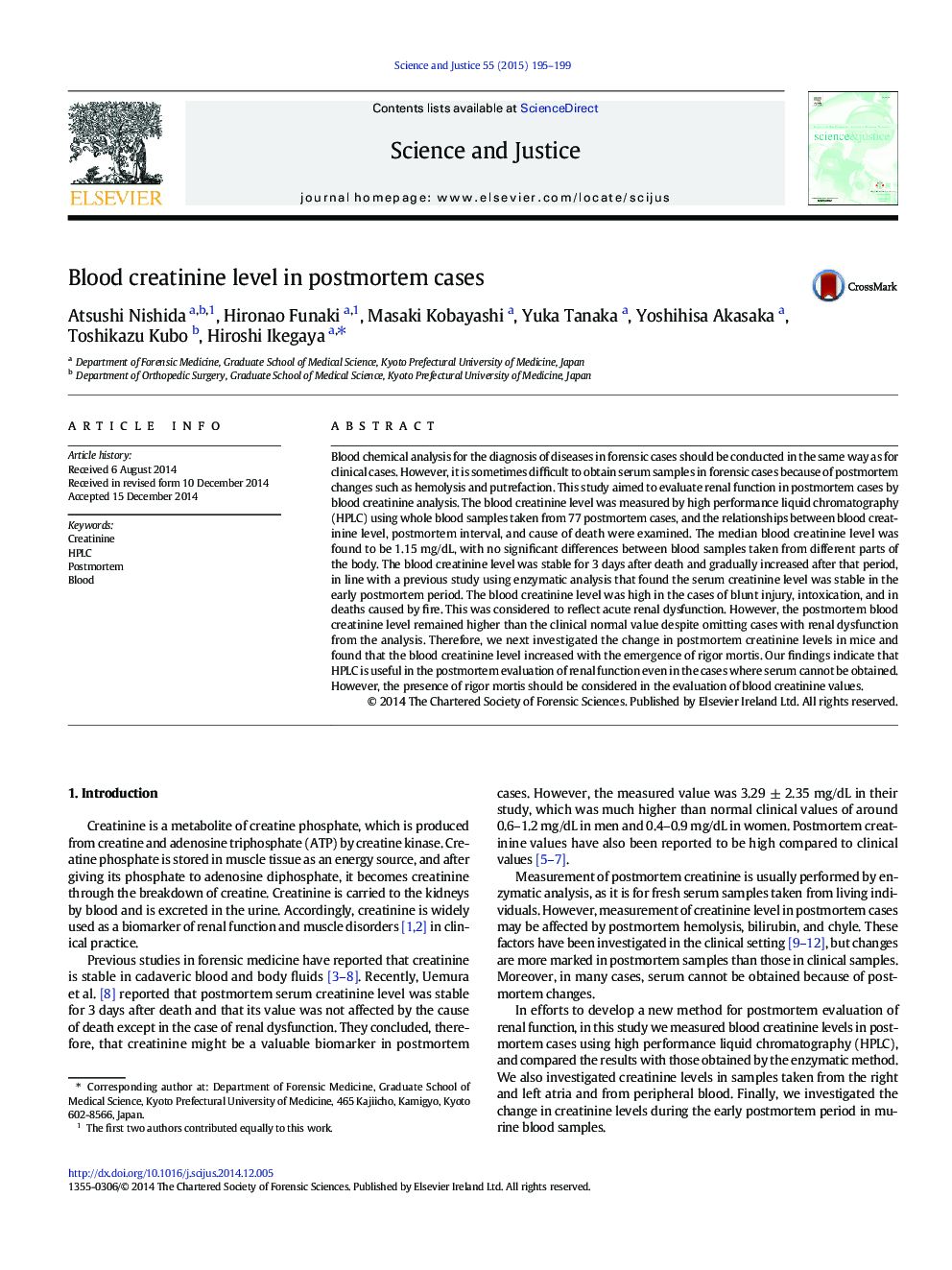| کد مقاله | کد نشریه | سال انتشار | مقاله انگلیسی | نسخه تمام متن |
|---|---|---|---|---|
| 106954 | 161731 | 2015 | 5 صفحه PDF | دانلود رایگان |
• This study aimed to evaluate renal function in postmortem cases by blood creatinine analysis.
• The blood creatinine level was measured by high performance liquid chromatography (HPLC) using whole blood samples taken from 77 postmortem cases.
• The median blood creatinine level was found to be 1.15 mg/dL.
• The blood creatinine level was stable for 3 days after death and gradually increased after that period.
• The blood creatinine level in cases with renal dysfunction was significant higher than that in cases without renal dysfunction (p < 0.05).
• High postmortem creatinine level explains the entry of muscle creatinine into the blood with the development of rigor mortis.
Blood chemical analysis for the diagnosis of diseases in forensic cases should be conducted in the same way as for clinical cases. However, it is sometimes difficult to obtain serum samples in forensic cases because of postmortem changes such as hemolysis and putrefaction. This study aimed to evaluate renal function in postmortem cases by blood creatinine analysis. The blood creatinine level was measured by high performance liquid chromatography (HPLC) using whole blood samples taken from 77 postmortem cases, and the relationships between blood creatinine level, postmortem interval, and cause of death were examined. The median blood creatinine level was found to be 1.15 mg/dL, with no significant differences between blood samples taken from different parts of the body. The blood creatinine level was stable for 3 days after death and gradually increased after that period, in line with a previous study using enzymatic analysis that found the serum creatinine level was stable in the early postmortem period. The blood creatinine level was high in the cases of blunt injury, intoxication, and in deaths caused by fire. This was considered to reflect acute renal dysfunction. However, the postmortem blood creatinine level remained higher than the clinical normal value despite omitting cases with renal dysfunction from the analysis. Therefore, we next investigated the change in postmortem creatinine levels in mice and found that the blood creatinine level increased with the emergence of rigor mortis. Our findings indicate that HPLC is useful in the postmortem evaluation of renal function even in the cases where serum cannot be obtained. However, the presence of rigor mortis should be considered in the evaluation of blood creatinine values.
Journal: Science & Justice - Volume 55, Issue 3, May 2015, Pages 195–199
